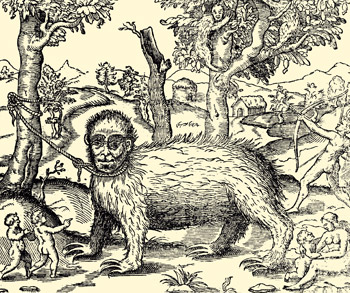If you can't see this message, please click here
|
||||
 |
NEWSLETTER 16Annals of the Brazilian Academy of Sciences |
|||
With great pleasure I would like to call your attention to the present supplementary issue of the AABC - the second of the year. Dedicated to Biological Sciences, this publication features 35 articles, mostly original research. A great number of the contributions are related to Zoology, focusing on fishes (e.g., population structure of a siluriform; digestive tract of a puffer fish), snakes (reproductive biology of a Dipsadidae), anurans (diversity in subtropical areas; reproductive phenology), and insects (e.g., larvae and pupa of a Diptera; new species from neotropical areas). Other studies presented here are more ecological (e.g., nematodes on sandy beaches; effects of changing vegetation in bird communities), including a review on the impacts of non-native tree plantations and invasive plant species in China. Lastly, I would also like to mention the studies on the potential influence of selenium in Parkinson´s disease, a paper on ophidism (a public health problem) and a publication on toxicological studies regarding medicinal plants. |
 |
||
Please, keep in mind that since 2000 all papers published by the AABC can be downloaded free of charge at the SciELO site and previous editions of the Newsletter are available at the ABC website. We are now inviting you to scroll through the text and click on the title of the article that interests you! Alexander W. A. Kellner |
|||
1 - Biological variables of Hypostomus francisci (Siluriformes: Loricariidae) from Itapecerica River, Minas Gerais State, Brazil
|
|||
2 - Morphological and histochemical characterization of the digestive tract of the puffer fish Sphoeroides testudineus (Linnaeus 1758) (Tetraodontiformes: Tetraodontidae)
|
|||
3 - Description of the last instar larva and new contributions to the knowledge of the pupa of Dasyhelea mediomunda Minaya (Diptera, Culicomorpha, Ceratopogonidae)
|
|||
4 - Sandy beaches: state of the art of nematode ecology
|
|||
5 - Biological functions of selenium and its potential influence on Parkinson’s disease
|
|||
6 - Ecological impacts of non-native tree species plantations are broad and heterogeneous: a review of Brazilian research
|
|||
7 - Synergistic activity of doped zinc oxide nanoparticles with antibiotics: ciprofloxacin, ampicillin, fluconazole and amphotericin B against pathogenic microorganisms
|
|||
8 - Charcoal anatomy of Brazilian species. I. Anacardiaceae
|
|||
9 - rDNA mapping, heterochromatin characterization and AT/GC content of Agapanthus africanus (L.) Hoffmanns (Agapanthaceae)
|
|||
10 - Reproductive biology of Thamnodynastes hypoconia (Serpentes: Dipsadidae) in Brazilian subtemperate wetlands
|
|||
11 - Lipolytic response of adipose tissue and metabolic adaptations to long periods of fasting in red tilapia (Oreochromis sp., Teleostei: Cichlidae)
|
|||
12 - Scientific Performance of Brazilian Researchers in Pharmacology with grants from CNPq: A comparative study within the Brazilian categories
|
|||
13 - The effects of forest-savanna-grassland gradients on bird communities of Chiquitano Dry Forests domain, in western Brazil
|
|||
14 - Bioprospecting of lipolytic microorganisms obtained from industrial effluents
|
|||
15 - Feeding preference of Plutella xylostella for leaves treated with plant extracts
|
|||
16 - Floristic characteristics of alien invasive seed plant species in China
|
|||
17 - Sloths of the Atlantic Forest in the sixteenth and seventeenth centuries
|
|||
18 - Miconia gigantea, a long-forgotten endemic and endangered species of Melastomataceae in the Brazilian Atlantic Forest
|
|||
19 - The gastroprotective effect of Memora nodosa roots against experimental gastric ulcer in mice
|
|||
20 - Amyloid-β peptide absence in short term effects on kinase activity of energy metabolism in mice hippocampus and cerebral cortex
|
|||
21 - In vitro germination of zygotic embryof hybrid BRS Manicoré (E. guineensis X E. oleifera)
|
|||
22 - Inhibitory effects of Zanthoxylum rhoifolium Lam. (Rutaceae) against the infection and infectivity of macrophages by Leishmania amazonensis
|
|||
23 - Recognition memory and DNA damage in undernourished young rats
|
|||
24 - A simplified table for staging embryos of the pipid frog Pipa arrabali
|
|||
25 - Physicochemcial/photophysical characterization and angiogenic properties of Curcuma longa essential oil
|
|||
26 - Seasonal variation of the essential oil from two Brazilian native Aldama La Llave (Asteraceae) species
|
|||
27 - Diversity of anurans in dry forest fragments of a subtropical region in Brazil
|
|||
28 - Reproductive phenology of the American Bullfrog in subtropical Brazil: photoperiod as a main determinant of seasonal activity
|
|||
29 - Correlation between infection rate of triatominies and Chagas Disease in Southwest of Bahia, Brazil: a warning sign?
|
|||
30 - Atheroprotective action of a modified organoselenium compound: in vitro evidence
|
|||
31 - Phaeosphaeria deschampsii (Ascomycota): A new parasite species of Deschampsia antarctica (Poacea) described to Antarctica
|
|||
32 - Evaluation of the complexity and performance of marine planktonic trophic models
|
|||
33 - Acute Toxicity and Cytotoxicity Effect of Ethanolic Extract of Spondias tuberosa Arruda Bark: Hematological, Biochemical and Histopathological Evaluation
|
|||
34 - Inhibition of proteases and phospholipases A2 from Bothrops atrox and Crotalus durissus terrificus snake venoms by ascorbic acid, vitamin E, and B-complex vitamins
|
|||
35 - New Agromyza Fallén (Diptera, Agromyzidae) from Brazil and a key for the Neotropical species
|
|||
 |
Annals of the Brazilian Academy of Sciences
|